As the sun began to set on the second day of our Fiji research mission, many different colors and patterns of sulus, traditional Fijian sarongs, emerged from the M/Y Golden Shadow. The crew and scientific team were invited by Roko Sau (Roko Josefa Cinavilakeba) to join the chiefly village of Tovu for a welcome ceremony and dinner. This is one of four villages on Totoya and Roko Sau’s birth place.
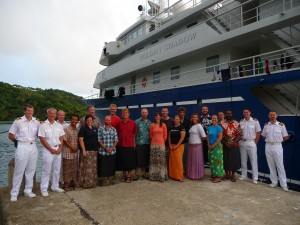
Fiji Welcomes Global Reef Expedition
The evening began with a village tour. We were shown buildings such as the village hall, post office, and church while Fijian children gathered around giggling and entertaining us even with the language barrier. We were also shown where the villagers dry coconuts to make products such as coconut oil. Coconut farming is the main economic source in Totoya.
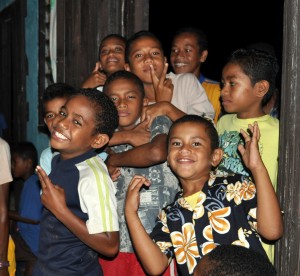
After the tour, we were invited into the village hall for a traditional welcoming ceremony. The village master of ceremony (MCE) thanked us. He further explained, “We are not wealthy people, but we have traditions and customs and we are sharing them with you.”
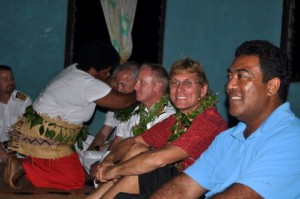
Our Executive Director, Phil Renaud, responded, “We are humbled and honored to be so warmly welcomed into your village and we hope that our scientific surveys of your beautiful coral reefs will be of great value to you in your efforts to preserve them for generations to come.”
We presented the village a gift of kava or yaqona, a drink made from the root of a pepper plant, which is presented at most Fijian ceremonies. In turn, the village invited us to drink kava with them. Afterwards customary songs and dances or meke were performed. In a meke, there are two groups. The first are the dancers or matana that dress in traditional Fijian clothes, and the second is the orchestra or vakatara. To add to the excitement, a few of our team members were also chosen to dance.
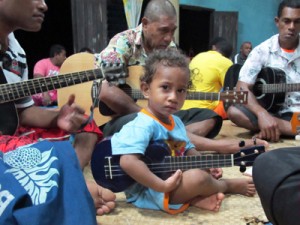
For dinner, we were invited into the chief’s home. Sitting side-by-side on the floor, we all stared at the magnificent feast in front of us. Much of the food was cooked in the earth oven called a lovo. We tried a variety of foods including land crab, fish, clams, taro (tubers), yams, and coconut milk.
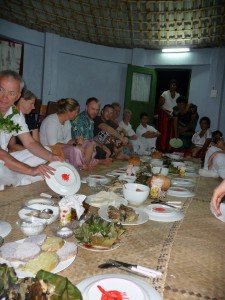
Ending the night, a formal goodbye ceremony or Tatau was performed. We all said our goodbyes and thanked the Fijians who warmed our hearts.
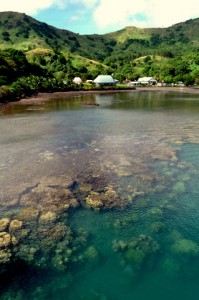
(Photos/Images by:1,5 Katie Hillyer; 2,3,6 Amy Heemsoth; 4 Stacy Jupiter)
To follow along and see more photos, please visit us on Facebook!
